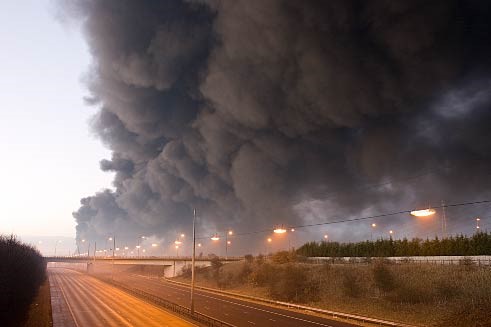In May, the headline “Chaos as lightning strike knocks out Stanstead refuelling system” was emblazoned across newspapers and websites up and down the country. Stanstead confirmed that its fuelling system was “unavailable” for a period of time on the 27th May due to a lightning strike. Flights were cancelled, delayed and diverted causing many passengers to abandon their bank holiday weekend plans.

This incident happened 3 days before eJet’s Managing Director, John Pitts, gave a presentation at the latest IATA Fuel Forum on Fuel Farm Resilience in London. It is no coincidence that this is fast becoming a hot topic in aviation circles. Whilst there is much guidance on airport fuel storage capacity, which assumes a fuel storage facility is in place and operational, there is often very little consideration given to what the impact would be if the fuel facility were to become, as per Stanstead, “unavailable”.

There have been a number of fuel shortage incidents at airports due to supply chain failures upstream of the airport (Denver 1990, Buncefield 2005 and Auckland 2017), but to date infrastructure issues at the airport itself have thankfully been quite rare. We believe though that there are a number of emerging threats which should cause a reassessment and improvement in resilience against fuel farm failure.
The trend to date is for an airport to build and maintain a single fuel farm due to the obvious benefits: low cost and concentration of infrastructure and dangerous goods into one place. The downside is of course that this means there is a single point of failure. As airports have expanded so has the size of the associated fuel farms. An increase in size and number of tanks presents its own set of issues particularly as regards land space restrictions and visibility.
When we look at the recent incident at Stanstead and the subsequent disruption from just a few hours fuelling downtime, the question that needs to be asked is what would be the impact of a long-term outage and are we are doing all we can to avoid it? It isn’t just the cancellation of flights that needs to be considered but if the fuel farm is lost there will be no passengers or air cargo and therefore no revenue. There will be a severe knock-on effect to airports also from the loss of important non-aviation operations and revenues such as retail and car parking etc.
eJet are developing a number of strategies to reduce risk and diversify infrastructure in order to improve airport business resilience. We strongly believe that every airport should have an up-to-date Aviation Fuel Strategy embedded in its Master Plan. We welcome enquiries from interested airports. If an airport does not already have an Aviation Fuel Strategy, we are leaders in developing them. Equally we can update an existing strategy to take into account growth projections and manage change. Our independence guarantees that airports will have an unbiased and pragmatic tool to use. It is the airports which are in the front line on this issue.
We live in a modern world where we expect excellent delivery of services and the supply chains enabling this are taken for granted. Aviation Fuel resilience is emerging as a potential pinch point in the continued strong growth of the aviation sector. However the risks can be minimised if airports take on board the impacts that fuel can have on their business and do something to safeguard it.
Back to Latest News